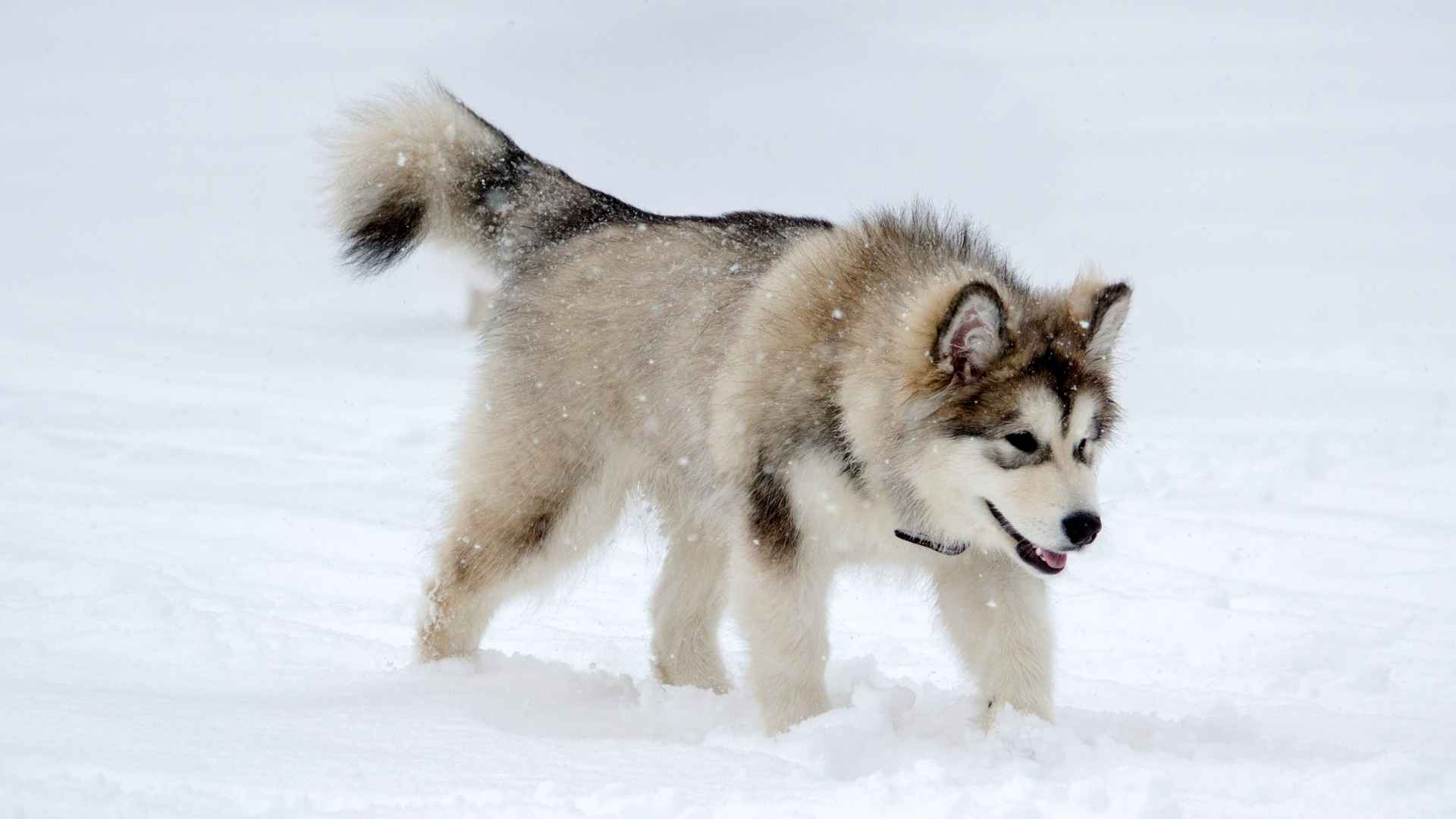What makes a dog thrive in Alaska’s frozen wilderness? How do their unique traits suit rugged terrain and icy climates?
Alaskan dog breeds, shaped by the Arctic’s harsh demands, are renowned for strength, endurance, and loyalty. These dogs often have thick double coats to withstand subzero temperatures, ideal for pulling heavy sleds over vast distances.
They have diverse temperaments, from high-energy workers to affectionate companions, making them suited for active owners or urban homes. This article will explore seven Alaskan dog breeds, explaining their origin, temperament, and care needs.
Whether bred for sledding or companionship, these breeds possess Alaska’s spirit of resilience. Discover key facts and tips to choose the perfect Arctic dog for your lifestyle.
Alaskan Dog Breed
1. Alaskan malamute
The Alaskan malamute is a powerful dog breed, standing over 23-25 inches tall and weighing up to 75-85 pounds. They are known for their strength, stamina, and size. Originally bred for hunting and hauling heavy loads, they are also used for hauling large crates and goods.
Alaskan malamutes are loyal and affectionate dog breeds but can be strong-willed and independent, says WebMD. Historically, they played a significant role in World War II as search and rescue dogs and were used for various tasks.
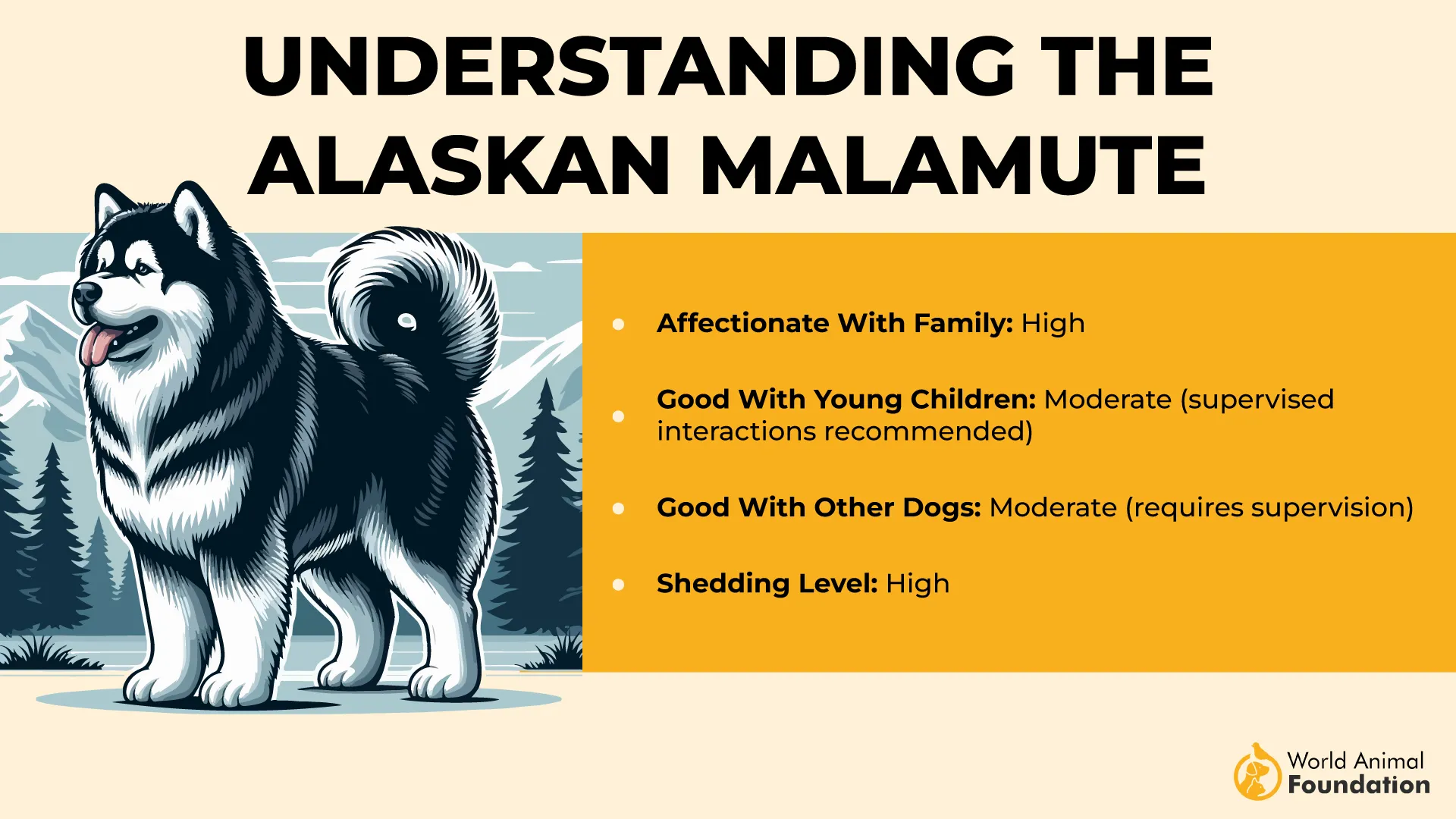
The malamute is a true mainstream of sled dog breeds. They have high energy levels and require two hours of vigorous regular exercise. Malamute parents should provide a balanced diet, regular grooming, training, and early socialization.
Malamutes love to stay with active families, and they thrive on interaction and consistent training.
2. Alaskan Husky
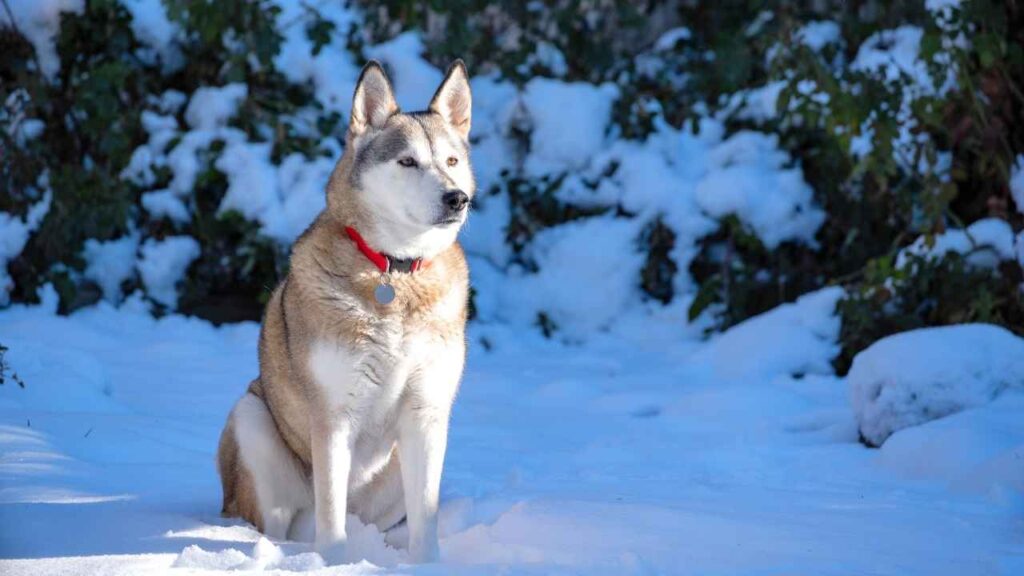
The Alaskan Husky is a robust working dog bred for its exceptional strength and endurance. Built for harsh weather and extreme cold, this breed excels at pulling sleds over long distances.
Alaskan Huskies are mixed breed and genetically diverse and are not recognized as a pure breed due to their varied ancestry. Alaskan Huskies have genetic versions of two breeds: the Siberian husky and Alaskan malamute.
Their strong physique and agile movements enable them to perform demanding tasks with ease. Alaskan Huskies were originally developed with the sole purpose of hauling sleds. They thrive on physical activity and mental stimulation, making them perfectly suited for outdoor adventures.
These loving companions need regular exercise and training, which are essential to keep this breed happy and healthy.
3. Alaskan klee kai
The Alaskan Klee Kai is a small dog breed that originated from Alaska, weighing up to 6-25 pounds. They are friendly and have agility and a highly energetic nature, as per the AKC.
In 1997, the United Kennel Club officially acknowledged the Klee Kai as a legitimate dog breed, establishing their status as a top Alaskan companion in the canine world.
They were created for friendship as opposed to other dog breeds, which were developed as working sled dogs in harsh environments. With proper care and attention, Alaskan klee kais thrive, but they can be prone to haunting or escaping if not properly secured.
Regular veterinary checkups are also crucial to monitor their health.
4. Malanees
The Malanees is a hybrid Alaskan breed, resulting from a cross between an Alaskan Malamute and a Great Pyrenees. This breed combines the strength and drive of the Malamutes with the guarding instincts of the Pyrenees.
Malanees are working-class sled dogs with high energy levels, capable of walking long distances. They have a fluffy coat that varies in color and requires regular grooming.
With proper training, they can be kind and affectionate with family members, but their strong will makes them stubborn at times.
They are extremely gentle with children and well-suited to cold mountainous temperatures. Overall, the Malanees is a unique breed that thrives with active owners who can provide necessary exercise and training.
5. Alaskan Maladors
Alaskan Maladors are the cross between Malamutes and Labrador Retrievers. Although this breed has been around since way back in 1800, this crossbreed is very uncommon and not recognized by kennel clubs.
They have dense and waterproof coats but are less suited for bitterly cold weather than purebred dogs. They can weigh up to 50-80 pounds and stand 24-28 inches tall.
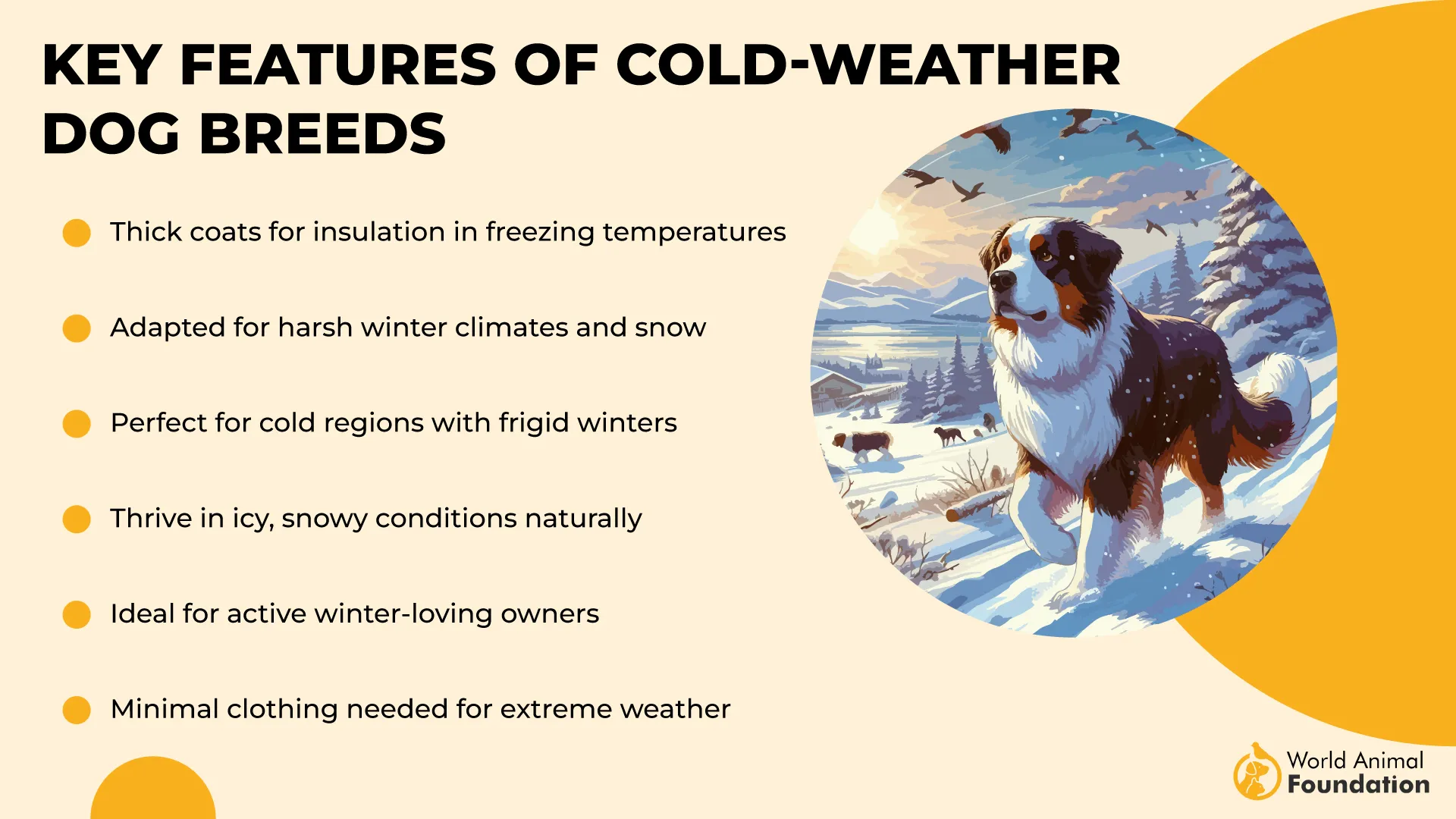
Although Alaskan Maladors typically have almond-shaped and brown eyes. Some of them occasionally exhibit hazel, yellow, or even blue eyes. Alaskan Maladors are well recognized for being loving and affectionate pets, so those seeking a new best friend won’t be let down by this breed.
They are friendly and energetic and have excellent relations with humans. They are ideal to live with other animals, so if you are looking for an Alaska dog that lives in a multiple-pet family, this is the perfect friend for you.
6. Alaskan Chinook
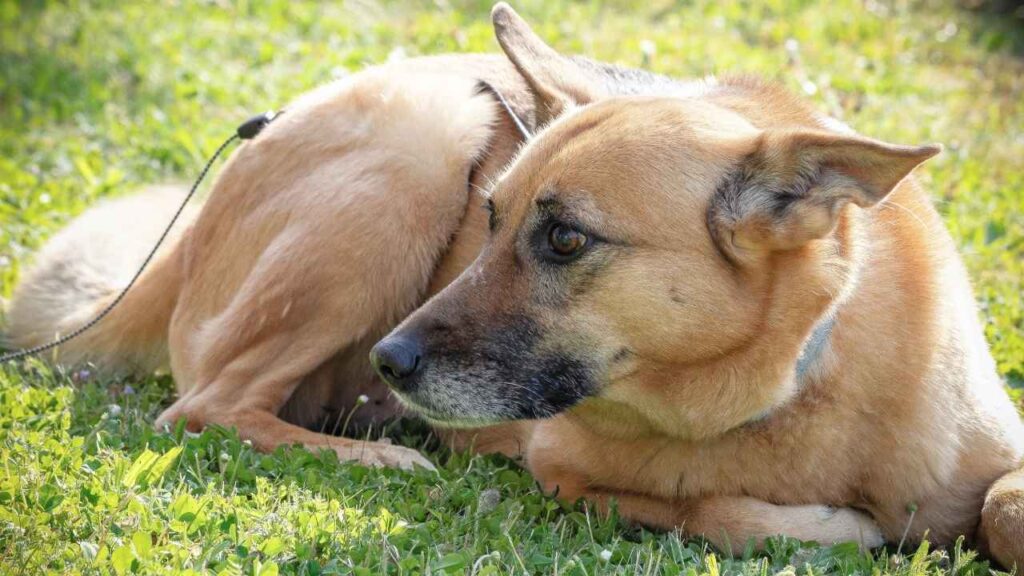
The Alaskan Chinook is a rare breed, created by crossing the Chinook with the Alaskan Malamute. They have thick undercoats and coats that vary in length and texture, making them resilient in cold weather.
They often have a honey or tan overall tint to their coat and look something like Alaskan huskies. Originally bred for agility and endurance, they are now considered loyal companions.
They are kind, lively, and especially loyal to young children. The history of Alaskan Chinook has been turbulent, with multiple instances where it was even brought to the verge of extinction.
They won’t abandon you even during the most demanding exercises. They need 2 hours of exercise daily, which can consist of walking, running, or hiking. Therefore, this is a fantastic dog for hikers.
7. Alusky
The Alusky is a cross between a Husky and an Alaskan Malamute, known for its strength and energy. One can expect Alusky to have wolf-like traits because both parents have uncanny similarities to wild wolves. They are known as the sweetest Alaskan wolfdog breed.
They have a double coat that can be various colors and are well-built and resilient. Originally bred for sled pulling, Aluskies inherit high energy and outgoing personalities from their parent breed.
Although still considered hybrid dogs, they offer a balance between the strength of Huskies. With their unique characteristics, Aluskies are expected to gain popularity in the coming years as versatile and capable canines.
These Alaskan breeds are known for their high energy and outgoing personalities, making them a great fit for active families. To care for an Alusky, owners should be prepared to provide their regular grooming to manage their double coat. Also plenty of physical exercise to make them happy and healthy.
Conclusion
The Alaskan dog breed embodied the spirit of resilience and adaptability, thriving in the harsh Arctic environment. Their unique traits, such as thick double coats, enable them to withstand subzero temperatures and rugged terrain.
With diverse temperaments, they excel as both high-energy workers and affectionate companions. Whether bred for sledding or companionship, these dogs possess a strong work ethic and loyalty.
To bring an Alaskan dog into your life, consider your lifestyle and needs and discover key facts and tips to ensure a harmonious match. With proper care, they will be loving and loyal companions.


